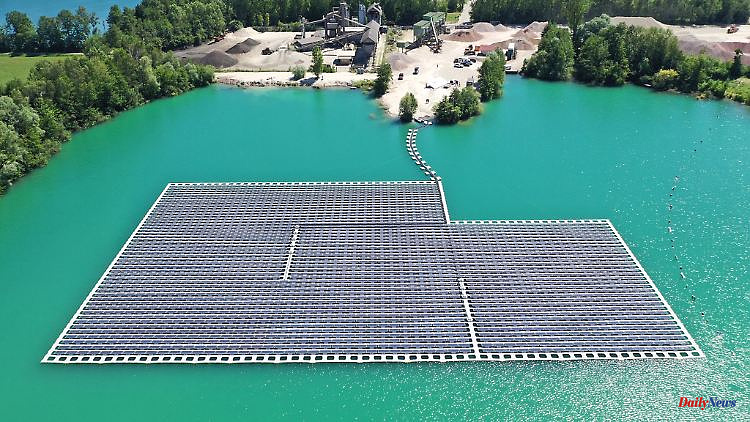Karlsruhe (dpa/lsw) - With the help of floating photovoltaic systems on quarry ponds, gravel works operators can produce part of the electricity required for their machines on site. Since Thursday, the State Agency for the Environment of Baden-Württemberg (LUBW) has been presenting the potential for individual quarry ponds in the south-west in the Baden-Württemberg Energy Atlas floating photovoltaic (PV) systems, explained LUBW President Ulrich Maurer in Karlsruhe. In addition to PV systems on roofs and open spaces, so-called floating PV could become another important pillar of PV power generation in the country.
With the help of a traffic light system for suitable and conditionally suitable quarry ponds, the LUBW shows the theoretical potential. Depending on the scenario considered, this is between 0.28 and 1.13 gigawatt peak (GWp) for the 71 identified quarry ponds. This unit enables a statement to be made about the maximum output that a system can achieve under ideal conditions such as good solar radiation, ideal alignment of the photovoltaic system and extensive use of the lake.
"These calculations serve as an initial orientation for planners and gravel works operators and cannot replace their own planning with expert providers," explained Maurer. The level of the self-used PV power share is decisive for the return on the entire system operation, since this share can be offset against the avoided purchase electricity costs and can therefore be calculated higher than the remuneration for the fed-in PV power surplus.
According to the information, however, legal requirements lead to the fact that the lake area that can actually be used is significantly restricted. The systems may cover a maximum of 15 percent of the lake and must be more than 40 meters away from the shore in order to minimize the risk of possible ecological damage to the water bodies.












